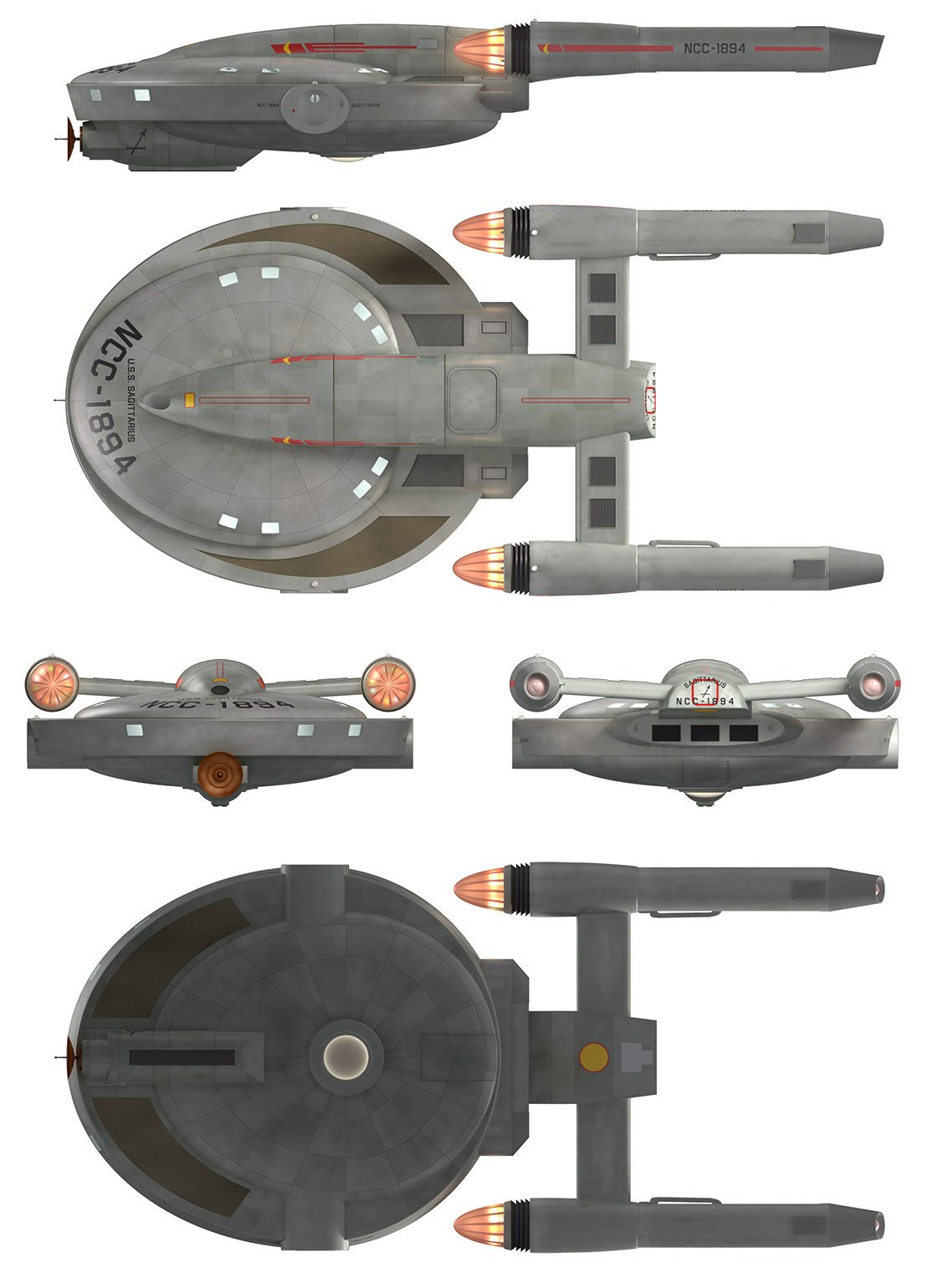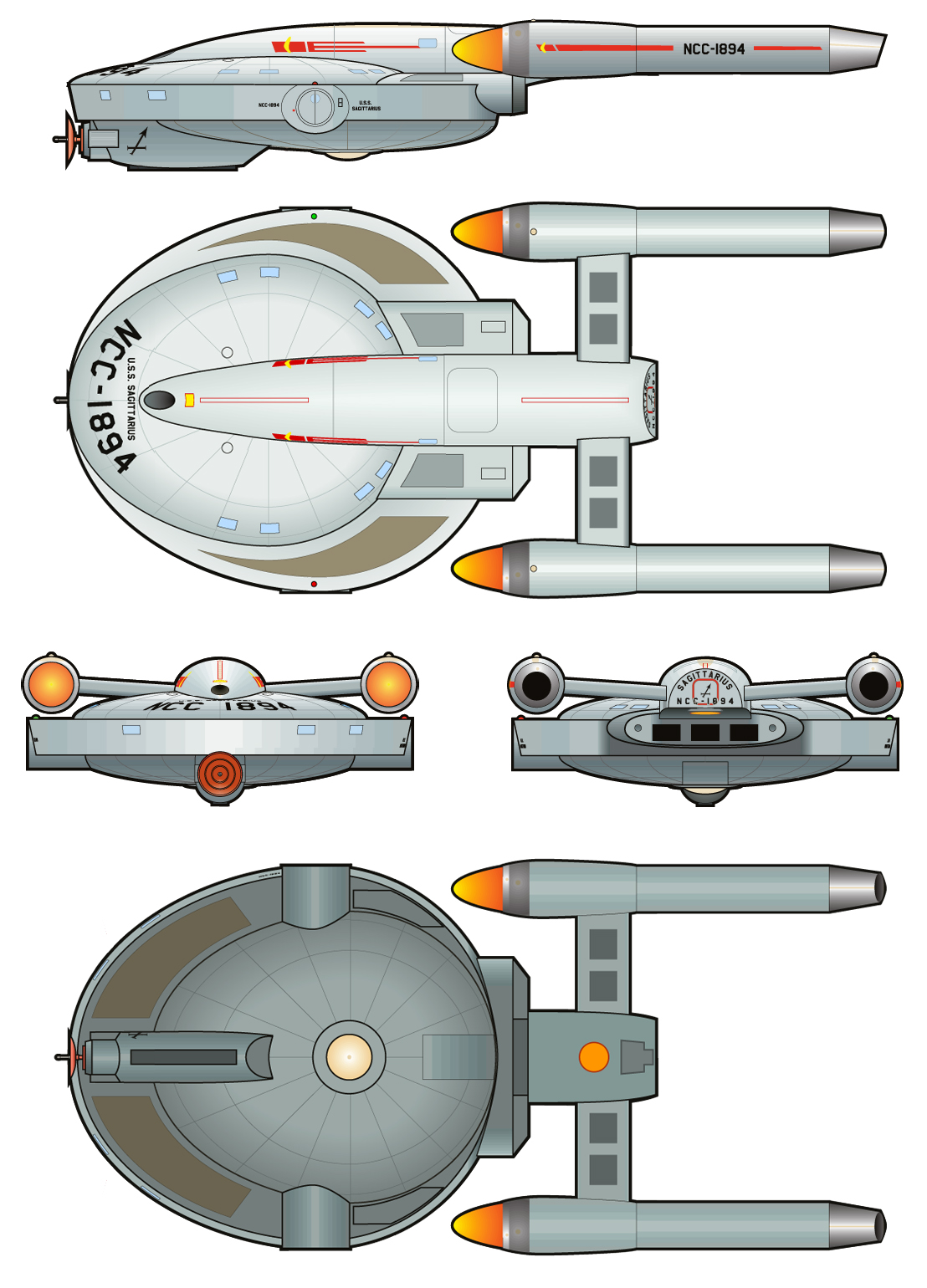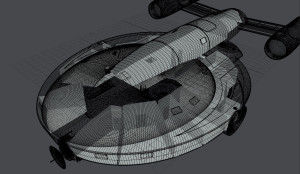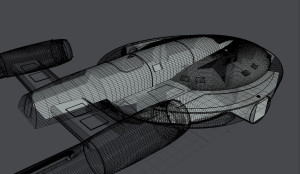Comparison of my model with Masao Okazaki’s original schematic drawing
Download Lightwave 2015 Version
The Archer-class starship is a small TOS-era scout designed by Masao Okazaki for the Star Trek: Vanguard novels created by David Mack, Dayton Ward & Kevin Dilmore, and Marco Palmieri. I began the model some time ago, after getting the idea of doing an opening credits sequence animation for the then-recently-announced Star Trek: Seekers spin-off series.
(Yes, I first got the idea to make this model in August of 2013. I didn’t actually begin building the model until mid-December of that year, so it’s been almost exactly two years. I keep telling people, I’m not a modeler, but then I keep ending up modeling things…)
The model is rigged with animated landing gear and hatches, as well as a half-dozen alternate registry numbers. The is a roughly blocked out interior, but I had window-box burnout after my last project, so I left the rooms undetailed, to be filled in later.
I made a few minor changes to the design, which you may have noticed in the comparison above. The warp engine pylons only have vents on the top, rather than on the top and bottom. The nameplate on the saucer rim omits the “U.S.S.” so it can fit on one line. Finally, the engineering hull has a taper towards the back. That last one wasn’t intentional, but a result of my using this early cutaway to get the shape of that section of the ship, and not realizing it was widened in the final design. I think I prefer it this way, I think it makes the ship look sleeker than the other models, with more cylindrical engineering sections.
There are also a few differences from the two models used on the novel covers, which don’t explicitly contradict the original design drawing. I added globes to the rear nozzle of the warp nacelles, and made the machinery on the inner surfaces of the nacelles more like the corresponding area of the TOS Enterprise. The airlock on the port side was sunken in, and given detailing based on the docking ports on the TMP Enterprise. The starboard airlock (actually a door for an escape pod, sometimes called a skiff) is a square, corrugated hatch, rather than another circular airlock. Finally, I omitted the three bands on the saucer rim, thinking they were too much of a TMP-era design cue, and that ships that have that design element should have their windows fit in between the bands.
I believe I’m the first person to try and animate the landing gear of this design, which Okazaki described as “a foot pad that opens like an umbrella and folds in around the leg when the landing gear is stowed.” The drawings and other models depict the foot as a solid piece. I didn’t want to go full into sci-fi metamaterials to explain how a solid pad could fold up, which felt like it wasn’t true to the TOS aesthetic, so I designed it to split into pieces. The foot still warps and shrinks as it retracts, but it is intended to be seen from a distance, in shadow, in motion, so I think cheating is acceptable.
The nacelle caps in these renders were done with a post-production technique involving volumetric lights based on the description by Prologic9 in this post. Also, his second TOS Enterprise model served as my primary reference for texture and surfacing colors, as well as an in-camera nacelle cap effect I’m including with the model as an option for people who don’t want to bother with post work on their renders.
More detailed discussion and WIP renders can be found in the model’s Foundation 3D thread.
Finally, in addition to the the Lightwave version of the model (saved in Lightwave 2015.3, but I don’t believe I used any features that weren’t in Lightwave 9+), I’m including a conversion package with FBX and OBJ versions for people who use other 3D packages.
Download Lightwave 2015 Version
As is my custom, here are a series of 5K renders showing the model from various angles and demonstrating the animatable components of the ship, a larger version the orthographic renders at the top of the post on a black background, and a brief animation showing some of the animated lighting effects and rigs on the ship.

















